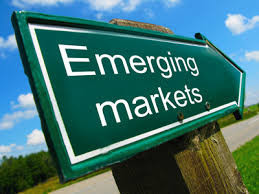Less strict or ‘relaxed’ regulatory requirements for biosimilars in some emerging markets are driving the proliferation of non-originator biologicals [1].
Biosimilars in emerging markets
Home/Reports
|
Posted 19/09/2014
 0
Post your comment
0
Post your comment

Non-originator biologicals can be defined as biological products that are intended to ‘copy’ another biological product, but that might not have been authorized following as strict a regulatory process as is required for approval of biosimilars in the European Union. European Medicines Agency (EMA) regulatory requirements ensure the same high standards of quality, safety and efficacy for biosimilars as for originator biologicals, and also include a rigorous comparability exercise with the reference product.
An example of such a non-originator biological or ‘non-comparable biological’ is Reditux (rituximab). Reditux is not a biosimilar, as it has never been studied head-to-head versus the reference product, Roche’s leukaemia treatment Rituxan/MabThera (rituximab). India-based generics maker Dr Reddy’s Laboratories (Dr Reddy’s) received approval for its ‘similar biologic’ of rituximab (Reditux) in India in 2007 [2]. The Indian approval was based on the results of a 17-patient phase II study in diffuse large B-cell lymphoma.
Major opportunities therefore exist in emerging markets, especially Brazil, Russia, India and China, where non-originator biologicals account for 91% of the 16 markets defines by IMS Health as ‘pharmerging’. These pharmerging markets include Algeria, Argentina, Brazil, China, Colombia, Egypt, India, Indonesia, Mexico, Pakistan, Russia, Saudi Arabia, Thailand, Turkey, and Venezuela.
Other examples of non-originator biologicals include Yi Sai Pu (etanercept) and Genfaxon (interferon beta). Yi Sai Pu was launched one year before the originator product Enbrel in China in 2006. Yi Sai Pu had sales of approximately US$41 million in China in 2012, making it the top selling anti-tumour necrosis factor (anti-TNF). Genfaxon, which is now Russia’s fifth biological product, was launched in the country at the end of 2010 by Laboratorio Tutuer.
Editor’s comment
For definitions of interchangeability and switching please see the GaBI Online glossary of key terms [3].
Related Articles
Biosimilar events from 2012 to 2014
Use of biosimilars in Europe differs across countries
References
1. Sheppard A. Biological/biotechnological and biosimilars market: the global outlook with special focus on Europe. 12th EGA International Symposium on Biosimilar Medicines; 3–4 April 2014; London, UK.
2. GaBI Online - Generics and Biosimilars Initiative. Dr Reddy’s plans EU launch for biosimilar rituximab [www.gabionline.net]. Mol, Belgium: Pro Pharma Communications International; [cited 2014 Sep 19]. Available from: www.gabionline.net/Biosimilars/News/Dr-Reddy-s-plans-EU-launch-for-biosimilar-rituximab
3. GaBI Online - Generics and Biosimilars Initiative. Glossary of key terms [www.gabionline.net]. Mol, Belgium: Pro Pharma Communications International; [cited 2014 Sep 19]. Available from: www.gabionline.net/Biosimilars/General/Glossary-of-key-terms
Permission granted to reproduce for personal and non-commercial use only. All other reproduction, copy or reprinting of all or part of any ‘Content’ found on this website is strictly prohibited without the prior consent of the publisher. Contact the publisher to obtain permission before redistributing.
Copyright – Unless otherwise stated all contents of this website are © 2014 Pro PharmaCommunications International. All Rights Reserved.
Guidelines
New guidance for biologicals in Pakistan and Hong Kong’s independent drug regulatory authority
Canada poised to remove requirement for Phase III trials for biosimilars
Policies & Legislation
ANVISA tackles 24-month backlog in biologicals post-registration petitions
US EO: delivering Most-Favored-Nation Prescription Drug Pricing to American patients
Advancing biologicals regulation in Argentina: from registration to global harmonization

Home/Reports Posted 10/10/2025
China-to-West pharma licensing deals surge in 2024 amid innovation push

Home/Reports Posted 22/05/2025
The best selling biotechnology drugs of 2008: the next biosimilars targets








Post your comment